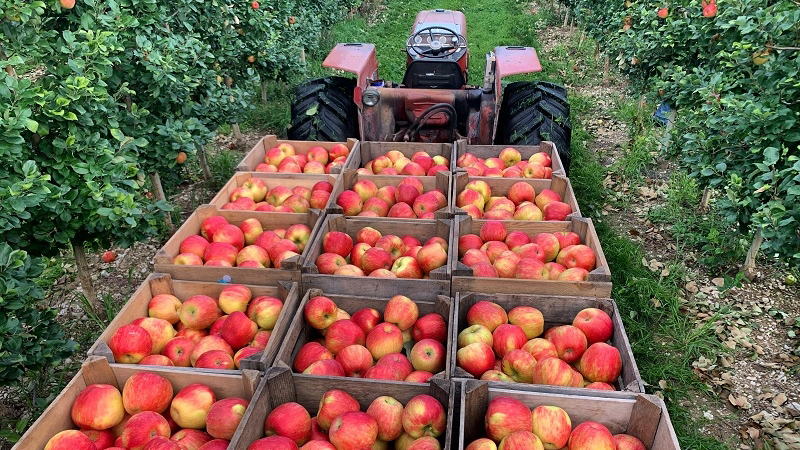Weed Control Challenges
Organic vegetable production is a method that does not allow synthetic fertilizers, crop protectants, or genetically modified seed. Growers cannot just substitute “organic” products, but must create a long-term farming system with healthy soil, crop rotations, cover crops, and preventative pest control via cultural, physical and mechanical means.
Weed control in organic vegetable production can be challenging. Weeds compete for light, water, and nutrients. Sometimes, they also encourage insect and disease problems. Short-term control is the seasonal control of weed pests, but long-term control is also possible through depletion of the weed seed bank in the soil.
First things first, weeds must be correctly identified in order for control measures to be appropriate. They can be classified based on whether they are grasses or broad leaves. Weeds also can be classified based on their lifecycle. Winter annual weeds germinate in the fall, overwinter, then re-grow in the early spring and generally die back by summer.
Summer annuals are one of vegetable growers’ biggest headaches, germinating in the spring and early summer and growing along with the crop. These are weeds such as lambsquarters, pigweeds, nightshades, and velvetleaf. Biennials, such as Queen Anne’s Lace, germinate and grow vegetatively the first year, overwinter, then flower and produce seed their second year. Quackgrass, nutsedge, Canada thistle, and milkweed are perennial weeds that grow indefinitely and propagate not only by seed but by underground structures such as nutlets, rhizomes, etc.
The Practice Of Rotation
Crop rotation is one of the most essential practices of organic vegetable growers. Because crops compete differently with weeds, rotation is an important aspect of weed, insect, and disease control. It is often difficult to plan for with vegetable crops since size of plantings may vary. Growers need to know crop families (brassicas, solanaceous, umbelliferaceae, cucurbits, legumes, sweet corn, alliums, lettuces), and should rotate by crop family. Try to design a plan for your fields for the next three to five years.
Some recommendations to follow include:
• Rotate back to a family of crops only once every three to five years.
• Have a portion of the farm fallow at any given time.
• Plan for cover crop rotations.
• Plan for double cropping, if possible.
• Take into account weed competitiveness.
For example, carrots, parsley, and lettuces do not compete well with weeds and are delicate. Put in these types of crops after a number of years of crops that can be cultivated and compete well.
Cover crops can be an effective method of weed control, since fast-growing, thickly sown crops will out-compete weeds. Choose a weed-controlling cover crop based on your soil needs and the type of weeds prevalent in the field.
Legume cover crops such as clover or vetches add nitrogen; non-legumes (rye, wheat) add organic matter to the soil. Some cover crops, like rye, are allelopathic, meaning they give off substances that inhibit weeds. Cover crops should be planned for in a rotation plan.
The Mulch Advantage
Both plastic and organic mulches, such as straw, can have many advantages in addition to acting as a physical barrier to weeds in the crop rows. When using black plastic, be sure to prepare your field appropriately and have enough soil moisture so that the mulch is applied smoothly and has good contact with the soil. Disadvantages to plastic mulch include weeds in between rows and in the planting holes. Disposal is also a problem, and if possible, used mulch should be taken to a recycling facility.
Mowing weeds is a temporary solution, but can prevent them from actively competing with the crop and from going to seed. Propane flamers can be very effective in killing small broadleaf weeds. Growers can use handheld flame weeders as well as larger, tractor pulled units for use on larger areas.
And finally, one of the most important techniques in organic weed control is cultivation. Effective cultivation includes knowledge of the crop, the weed, and the specific implement used. There are many different tools and timings of cultivation to bury or uproot the weed. Initial tillage prepares the field for planting and removes any growing weeds. The stale seedbed technique requires that after initial preparation, the field is watered and weeds are allowed to germinate. The field is then tilled shallowly (or flamed) to remove weeds. This is repeated two or three times to deplete the weed seed bank in the germination zone. Tools, such as tine weeders and various harrows, are useful for the stale seedbed technique.
Edge of the plastic, between row and in-row cultivation for organic weed control, is both an art and a science. Knowing the right timing for the weed and the soil conditions is very helpful but not always possible given the weather. But choosing the proper equipment, setting it correctly, and driving skillfully are all up to the operator. Traditional tools such as field cultivators are useful, but there are many other choices available including basket weeders, spyders, and finger weeders.
In conclusion, organic weed control can be achieved by an integrated program of cover crops, crop rotations, mulches, and mechanical controls such as flaming, mowing, and most importantly, cultivation. Preventing weeds from going to seed will deplete the weed seed bank and eventually lead to lower weed pressure and cleaner fields.








